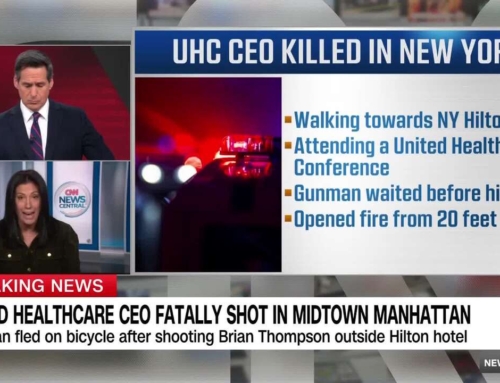As published in Forbes.
Listen to others speak, and one of the first things you will notice is how often people use words like “we,” “you,” “one” or “they” when they are really talking about themselves. For example:
- We are getting frustrated …
- You try to connect with millennials, but …
- If one hasn’t bought into the idea, then …
- They might not trust him …
One of the smallest and most powerful changes we can make to significantly improve our communication is to replace these four words with “I”:
- I am getting frustrated …
- I try to connect with millennials, but …
- I have not bought into the idea, so …
- I don’t trust him …
This one simple change changes everything, and it has a big payoff.
When I speak from my own experience, my listener(s) experience me as more authentic, transparent and, often, trustworthy, all qualities we seek and expect from those we work with and through. Using “I” creates more trust because it actually is a more honest way to communicate.
When I use the word “I,” I no longer get to hide behind vague identities like “one.” Instead, I immediately take ownership and accountability by being specific about what is actually occurring for me. Using the word “I” gives my listener(s) (and myself) direct access to exactly where I stand and what I think and/or feel.
The word “I,” although more authentic, powerful and effective, is rarely used in the way I am suggesting. Why? Because it is riskier. When I use “I” instead of “you,” it requires me to name and own my real thoughts and feelings, which I might not even be fully aware of — or, if I am, not yet ready or willing to share with others.
Using “I” requires me to be vulnerable because it demands that I ask for what I want, something surprisingly few of us human beings are comfortable doing. “I have not bought into the idea, so I would like us to all take a step back. I can feel the group wanting to move forward. However, there are red flags I just can’t get over. Can we all please discuss?”
Becoming a better communicator requires that we become comfortable discussing the uncomfortable.
This is where I want you to begin:
- This week, listen closely as others speak: in meetings, during conference calls, at the coffee shop, with family members at home. Pay special attention to how people naturally, unconsciously (subconsciously) remove themselves from being seen, taking ownership and accountability or being vulnerable. Watch for words like “we,” “you,” “one” or “they” when you can tell from the context of the conversation that they are actually only speaking about their own experience and, therefore, mean “I.” First, notice this in others.
- Next week, see if you can notice this same use of language in yourself. If you find it hard to notice this habit within yourself, please know you are not alone! Most of us are blind to how we use language and its vast impact and implications. Thus, you might share this post with a friend or colleague you trust and together agree to become accountability partners: Point out this habit in each other so that you each become more aware and can begin to replace “you” or “one” when it would be more powerful and honest to say “I.”
- Focus on using the word “I” whenever you are speaking about your own experience. Notice how it feels riskier, more vulnerable. Do it anyway. Notice the impact of making this one small change.
Using the word “I” will help you understand what you really think, feel and want. By coming to know yourself more fully in this way, you will be able to tap your vast knowledge, experience and intuition in greater ways.
However, in order to benefit others and your organization, you cannot keep this improved awareness of what you actually think, feel and want to yourself. You must share it. Even as you pay more attention inward, you will need to be courageous and take the risk of sharing your real thoughts, feelings and wants with those you work with and through, all with only one purpose: to more effectively advance the people you lead and the businesses you serve.
As you lead in the coming weeks, keep the following cheat sheet where you can see it daily. If helpful, print this out and clip it to your notepad, where it can be front and center during meetings.
- What I think right now is …
- What I feel right now is …
- What I want right now is …
- Given the above, what do I need to do and say right now (or not do and say) to best advance others and the business at hand?
As always, I welcome your experiences and stories of how you have applied the above.






